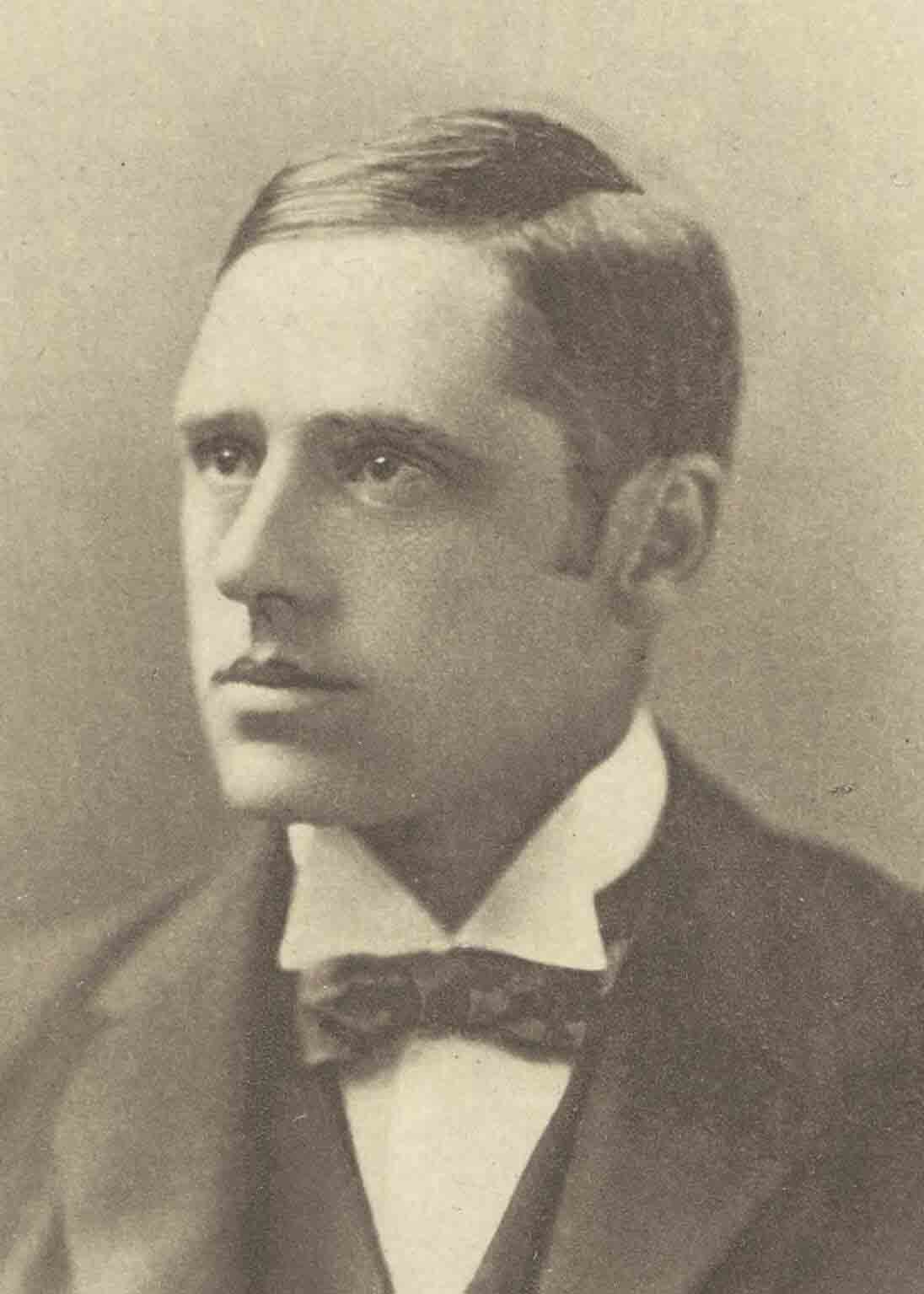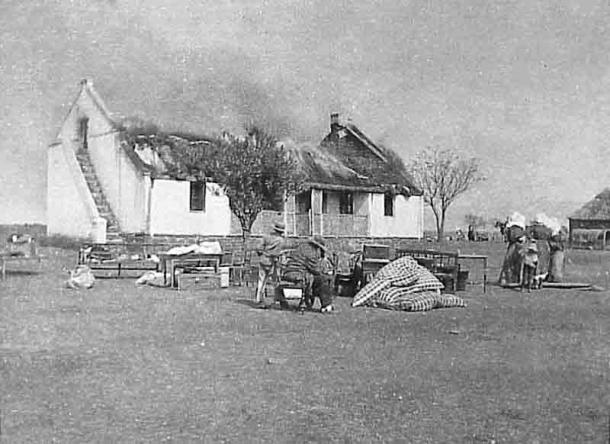While going through the personal papers of the famous Australian poet, author, and newspaper correspondent Andrew Barton “Banjo” Paterson, conservators at the National Library of Australia discovered something unusual. Unexpectedly thrust into the role of culinary archaeologists, at the bottom of a box they found a slightly rusted tin of intact Cadbury chocolate bars, fully uneaten and still partially wrapped in their original foil. On the cover, the tin bore the likeness of Queen Victoria, along with the following inscription: “South Africa, 1900. I wish you a happy New Year, Victoria RI.”
At the tender age of 120, this tin holds the distinction of being the oldest box of uneaten chocolates in the world. The conservators who found the chocolates were amazed by their nearly pristine condition, mentioning that they still looked good enough to eat (although none of the conservators volunteered to test that truth of that hypothesis).
The tins and the chocolate they contained were manufactured by the Cadbury Brothers, for distribution to British troops who were deployed to the far-off South African frontier during the Boer War. The chocolates were distributed mainly as a symbolic gesture, designed to lift British morale, but they quickly became a hot item on the local trade market—where Banjo Paterson may have acquired his box.
Paterson had been assigned to cover the Boer War as a correspondent for the Sydney Morning Herald in 1899 AD, and he spent about a year there before returning home in 1900 AD (presumably carrying his recently purchased souvenir chocolates).
Interestingly, it took some arm-twisting on the part of the Crown to get the chocolates issued. The Cadbury Brothers were committed pacifists, and they had no desire to support the Boer War in any way, shape, or form. Ultimately, they acquiesced to the Queen’s request for their involvement, as she sought to leverage the Cadbury Brothers’ reputation for excellence to let the troops know that the chocolate was good and that her interest in their welfare was sincere.

Andrew Barton “Banjo” Paterson in an 1890 AD photo. (National Library of Australia / Public domain )
Banjo Paterson And The Brutal Boer War
Perhaps Paterson forgot he had the chocolates, and that was why they remained unconsumed. Then again, maybe the chocolates reminded him of an experience he really wanted to forget, and that’s why he left them buried at the bottom of a box.
The Boer War was a nasty confrontation between British colonizers (and a supporting contingent of Australian troops) and descendants of the original Dutch colonizers (the progenitors of the Boers).
Despite the political justifications that were offered (i.e., a lack of autonomy for British settlers in Boer-controlled states, opposition to Boer cruelty toward the indigenous Black population), the war was essentially a struggle for control over the region’s ample and prodigious gold and diamond mines.
In just three years of conflict (1899-1902 AD), the war claimed the lives of tens of thousands of British soldiers, Boer farmers and their family members, and indigenous African inhabitants caught in the crossfire. As the situation degenerated for the Boers, they eventually resorted to guerilla warfare tactics (known as “terrorism” today) to keep their resistance alive.

One British response to the Boer’s guerrilla war was a “scorched earth” policy to deny the guerrillas supplies and refuge. In this image Boer civilians watch their house as it burns. ( Public domain )
In response to this turn of events, the British troops inflicted savage collective punishment on the Boers. They pursued a scorched earth policy that wrecked the Boer agricultural economy and left thousands destitute and homeless. Eventually, all Boer survivors, including women and children, were herded into concentration camps, where starvation and disease ran rampant and added significantly to the Boer War’s appalling death toll (children represented the majority of the 42,000 Boers who perished in those camps ).
Banjo Paterson did compose a long poem about his experiences traveling with the British troops during the Boer War, called ‘ With French to Kimberly ,” which seemed to glorify their efforts to suppress Boer resistance. But over time Paterson reportedly soured on the war, as he witnessed firsthand the terrible suffering experienced by the Boer civilian population. He chose to leave after spending just a year in South Africa, with memories that were undoubtedly unpleasant.
There is no way to know for sure how Paterson ended up with the tin of chocolates bearing Queen Victoria’s image and reassuring words. Perhaps he purchased the chocolates not as a memento but as a way to help out a seller who was in desperate need of cash. Or maybe someone gave him the box as an unsought gift, in return for a kind deed.
If Paterson’s memories of the Boer War brought him only sorrow, the sight of that chocolate tin might have proven quite unappetizing. That would explain why they remained uneaten and buried at the bottom of a box of papers.

The Combo Waterhole Queensland was likely the archetype of the billabong in the song “Waltzing Matilda” by Banjo Paterson. (Alun Hoggett / CC BY 3.0 )
The Banjo Paterson Collection Goes on Display
Known primarily for his work as a poet, Banjo Paterson is a legendary figure in Australian history . It was he who composed the lyrics for Waltzing Matilda , the unofficial Australian national anthem. He also authored the famous Australian poem The Man from Snowy River , which was turned into a movie in 1982. When the National Library of Australia announced its plans to catalog and digitally preserve his personal collection of written materials , they quickly raised the $150,000 required to complete the project because of Banjo’s fame and renown.
“The Banjo Paterson papers is such an iconic collection we were sure that when we went out to the public and asked them for help they’d give it,” Library Director-General Marie-Louise Ayres told ABC News in Australia . “And they did.”
Of course, there is no way to digitize chocolate. For now, Paterson’s tin of sweet mementos from a brutal but largely forgotten British Empire imperial adventure will be stored at the National Library of Australia in a cool, dry place, where it can be protected from the hot sun and hungry mice.
Top image: The tin of Boer War chocolates recently found among the papers of Banjo Paterson, Australia’s most famous poet. Source: National Library of Australia
By Nathan Falde
 RSS Feed
RSS Feed















 January 1st, 2021
January 1st, 2021  Awake Goy
Awake Goy  Posted in
Posted in  Tags:
Tags: 













